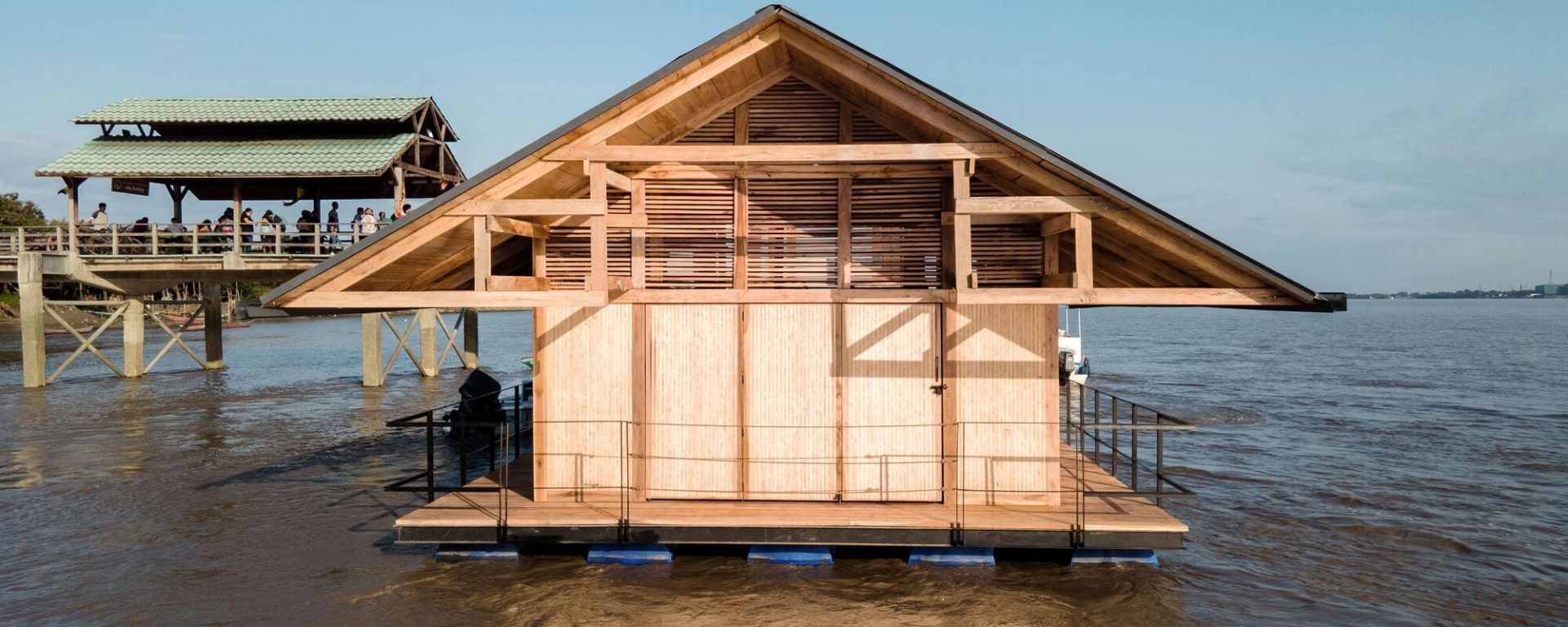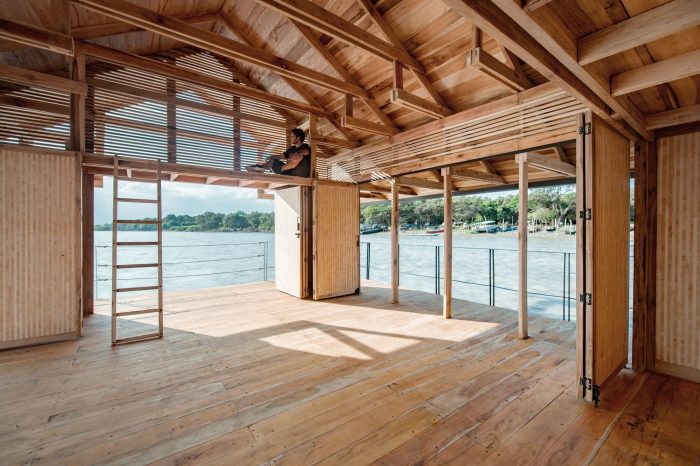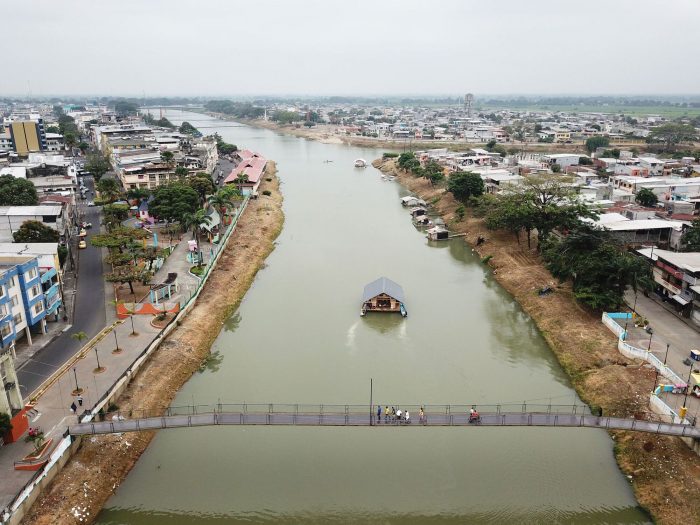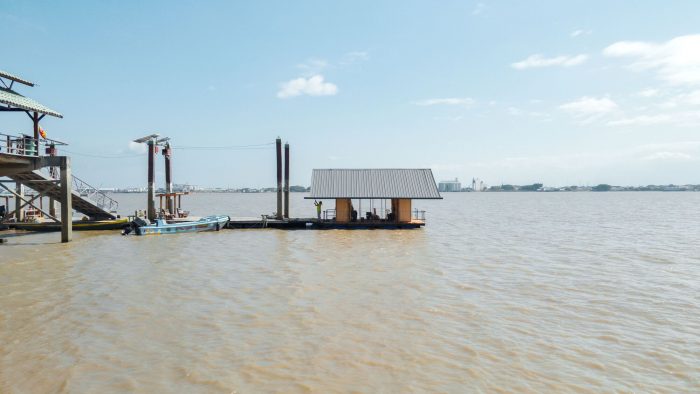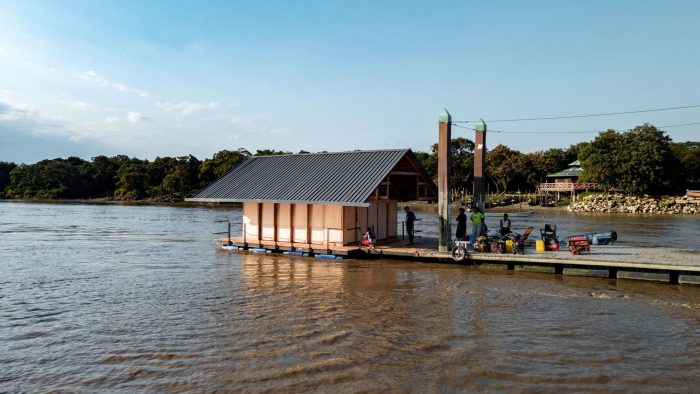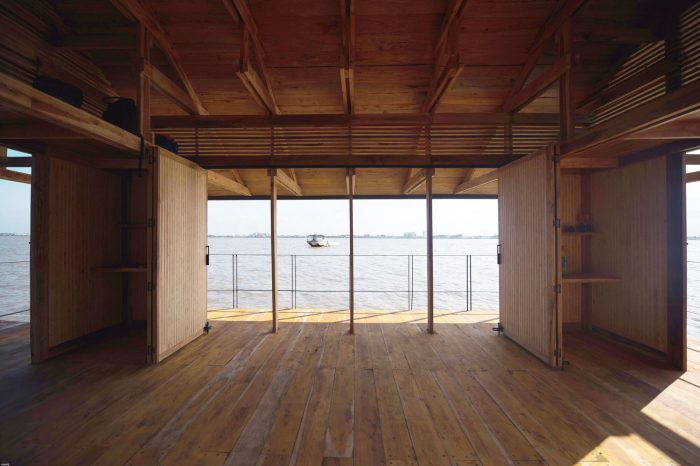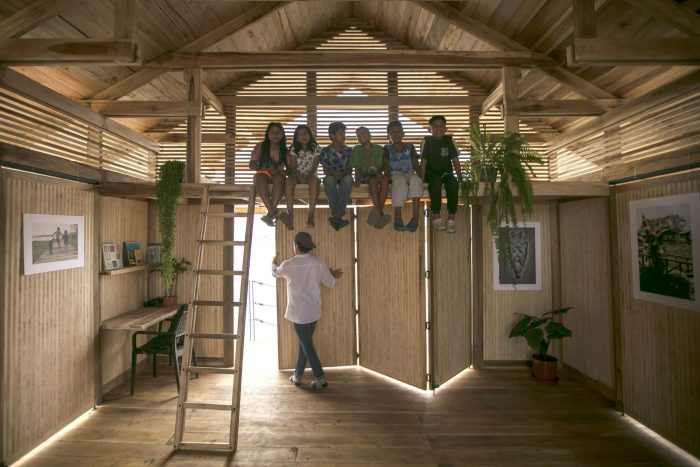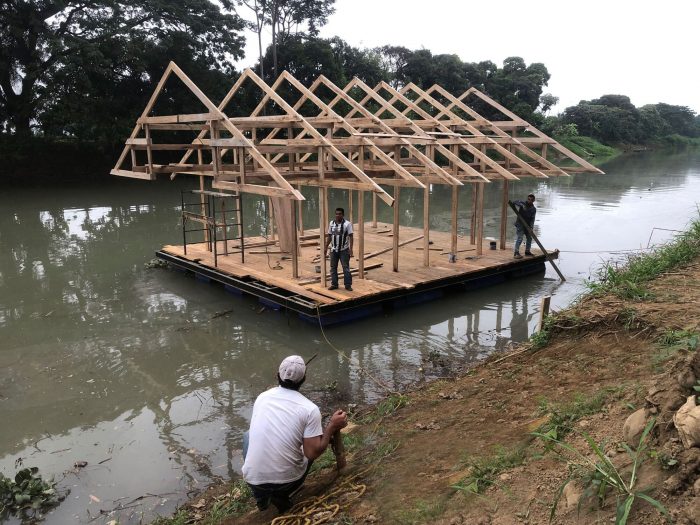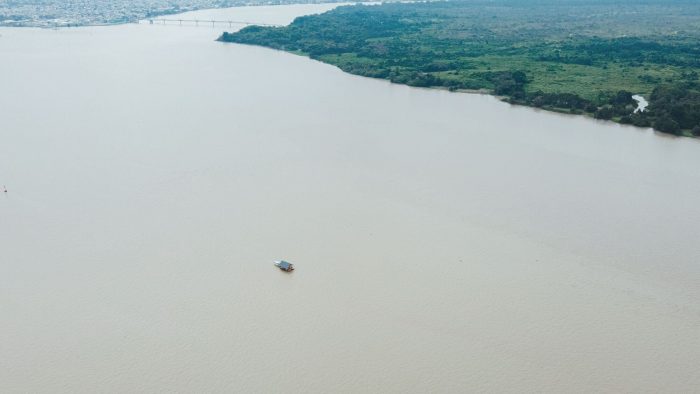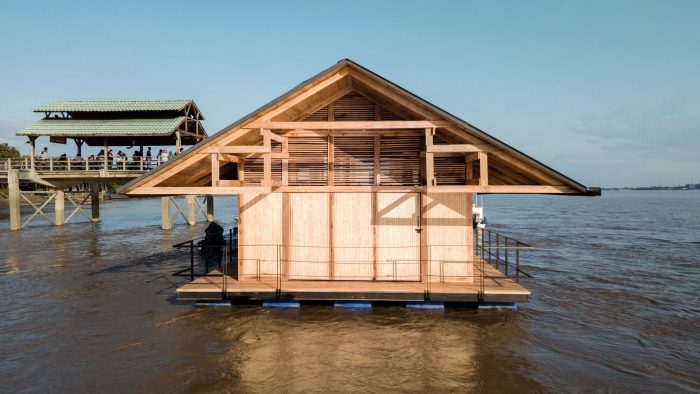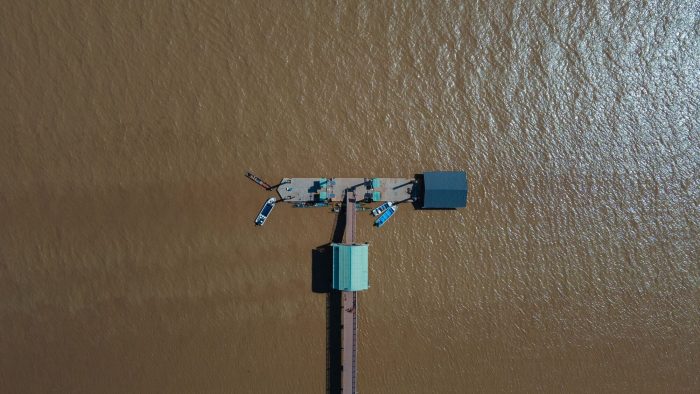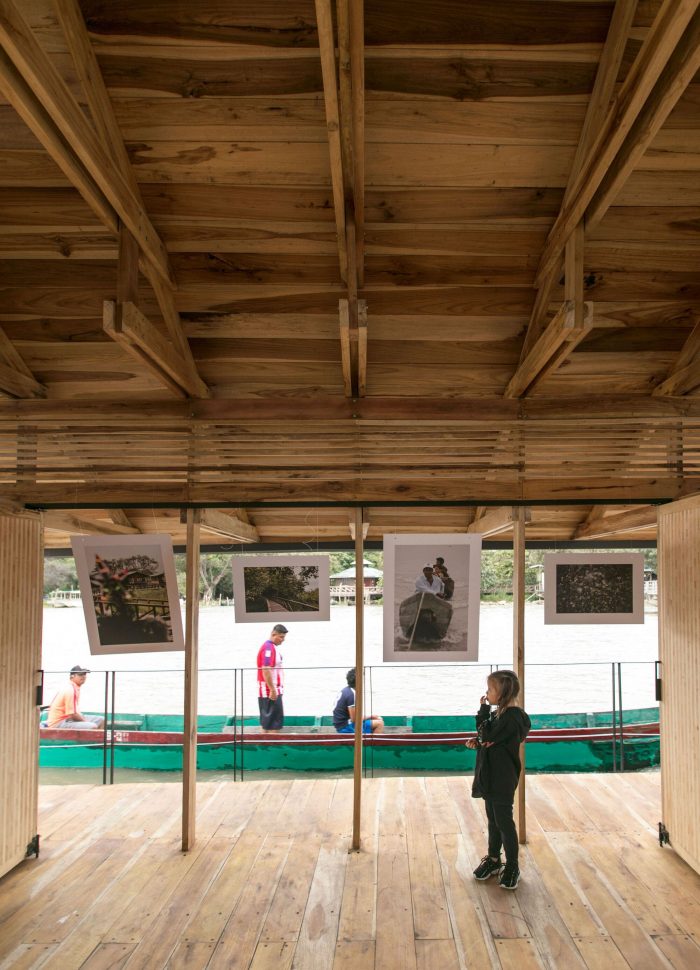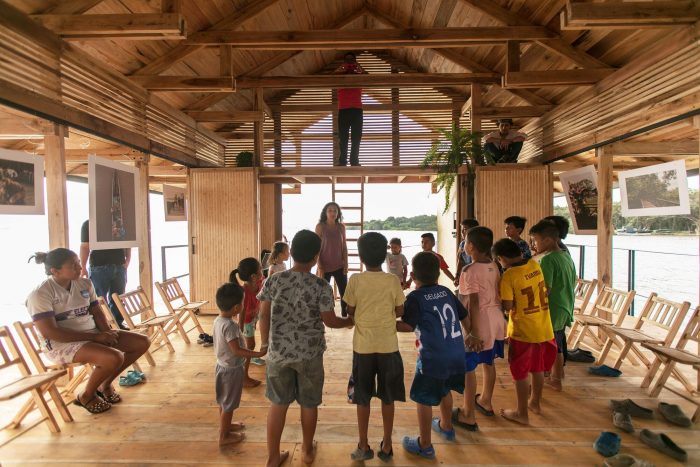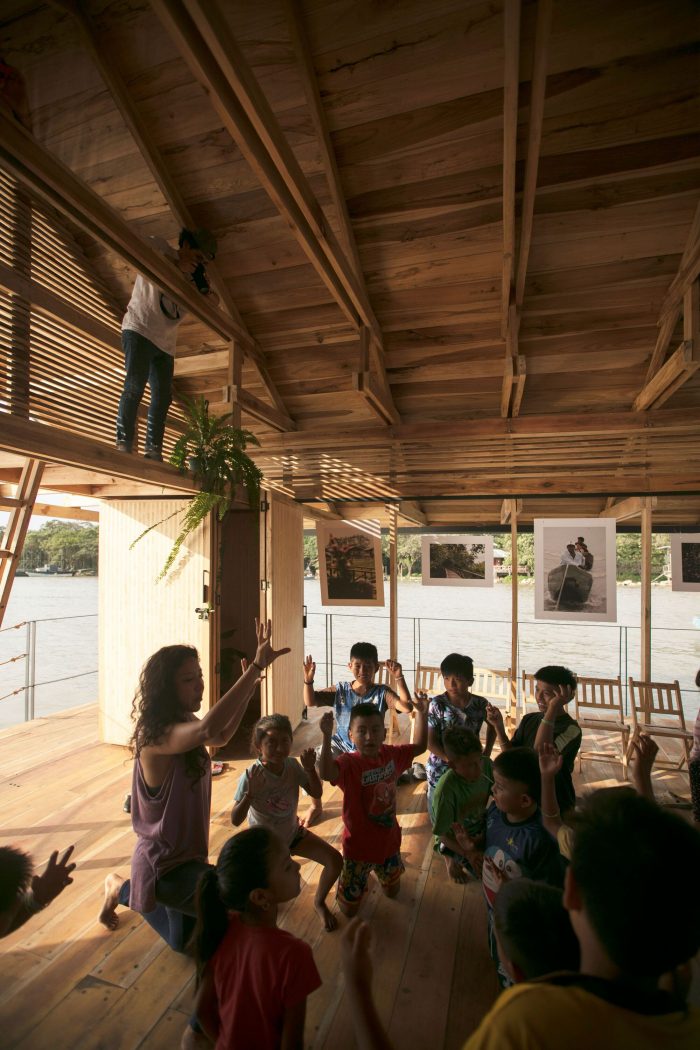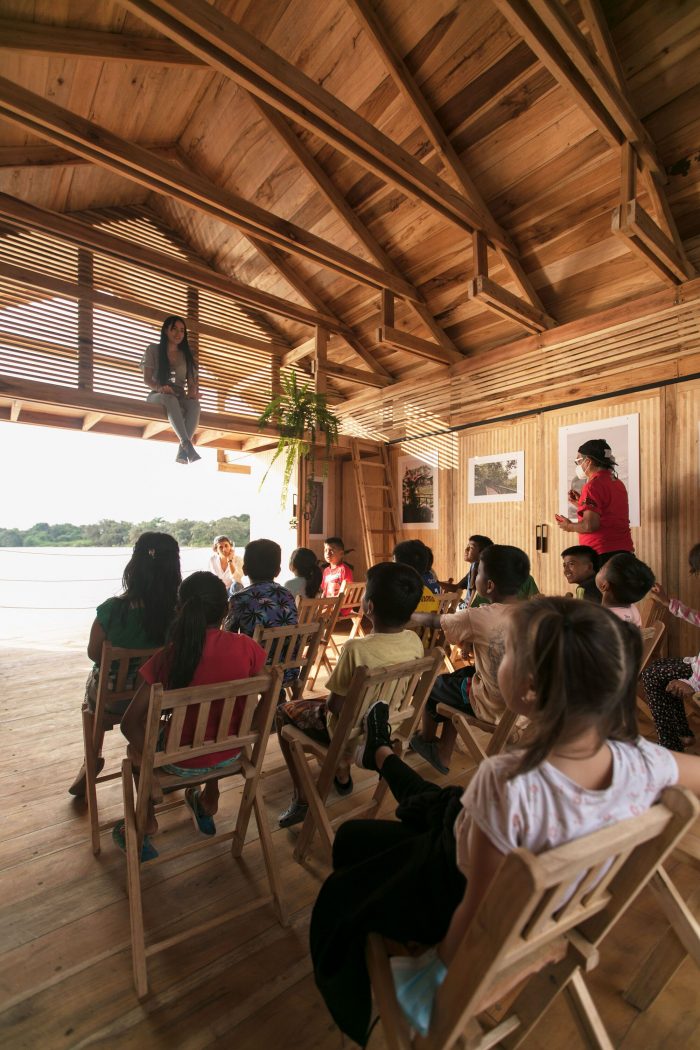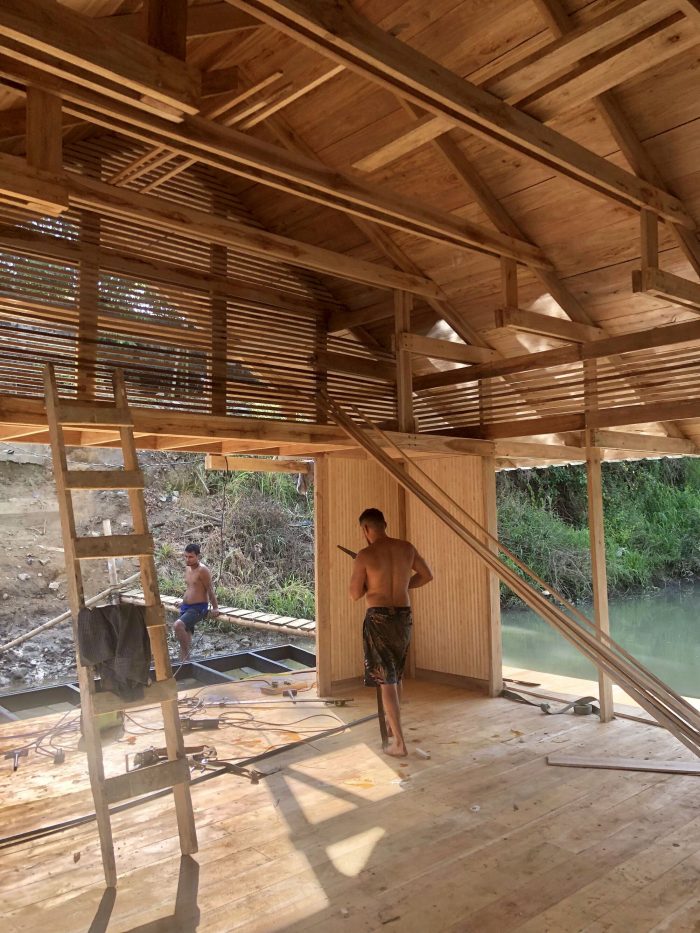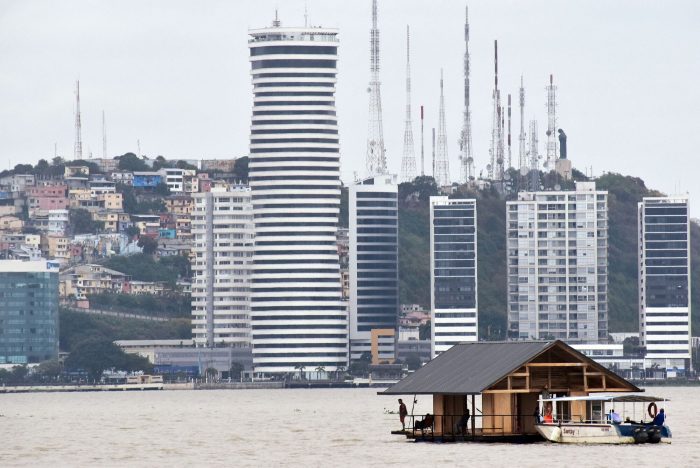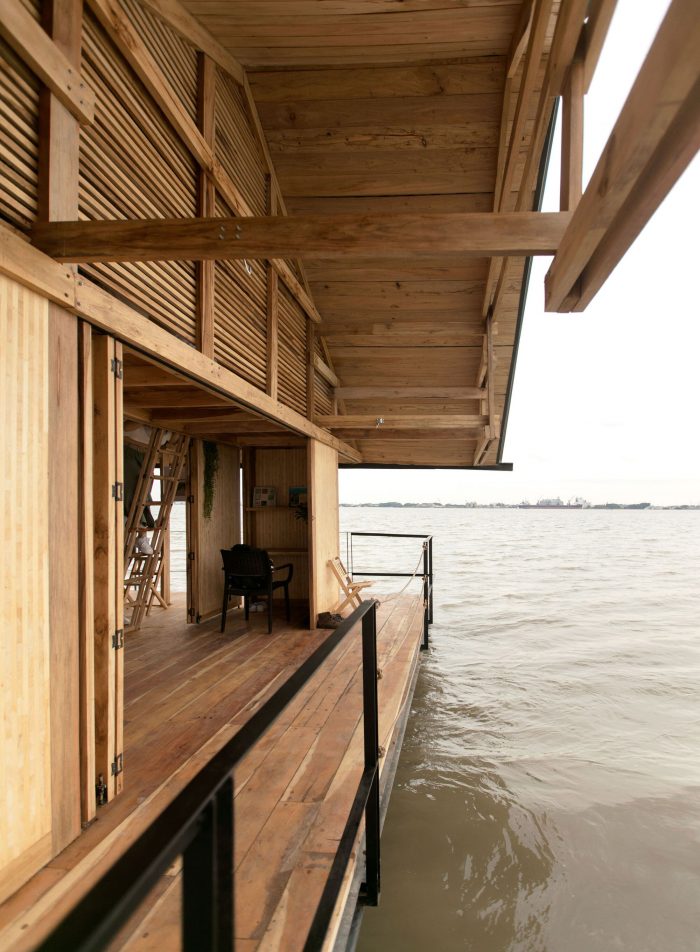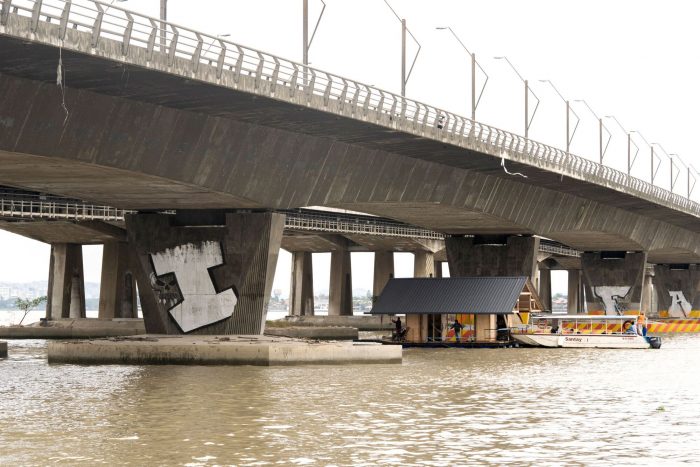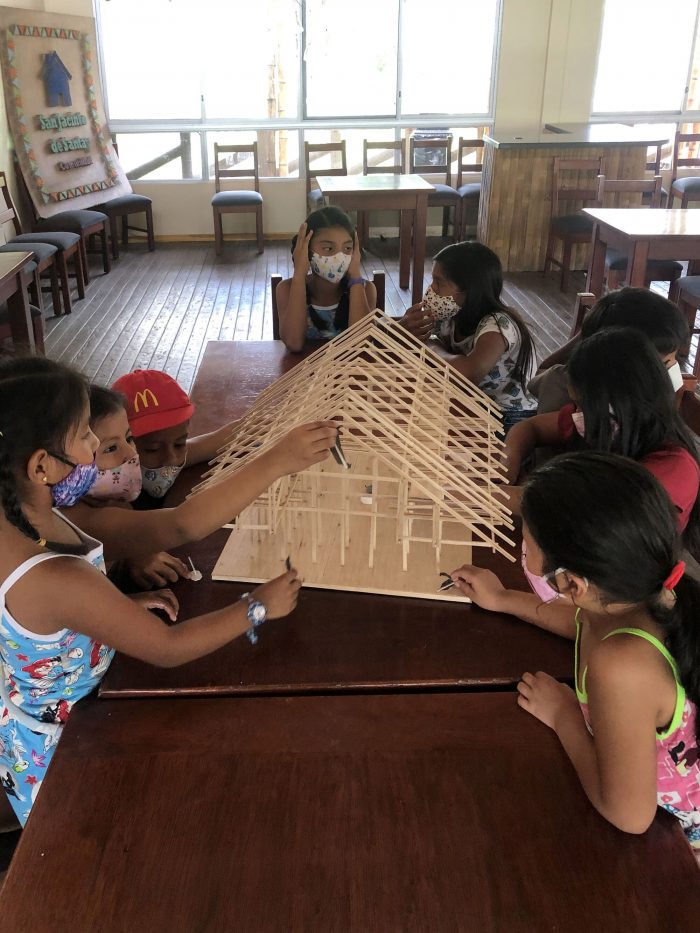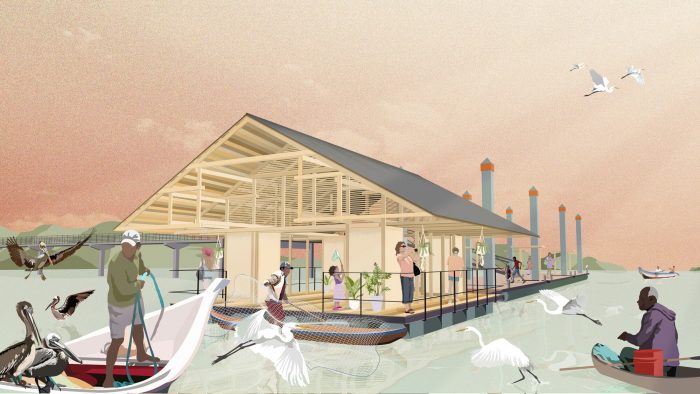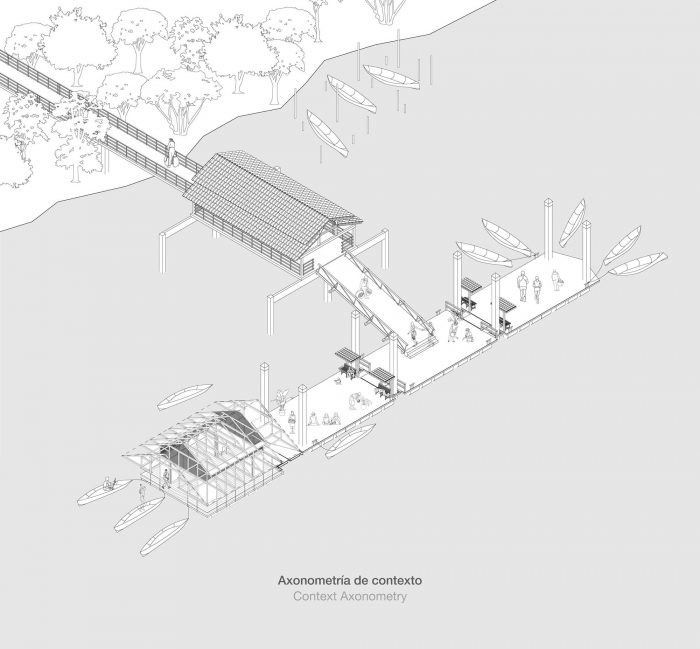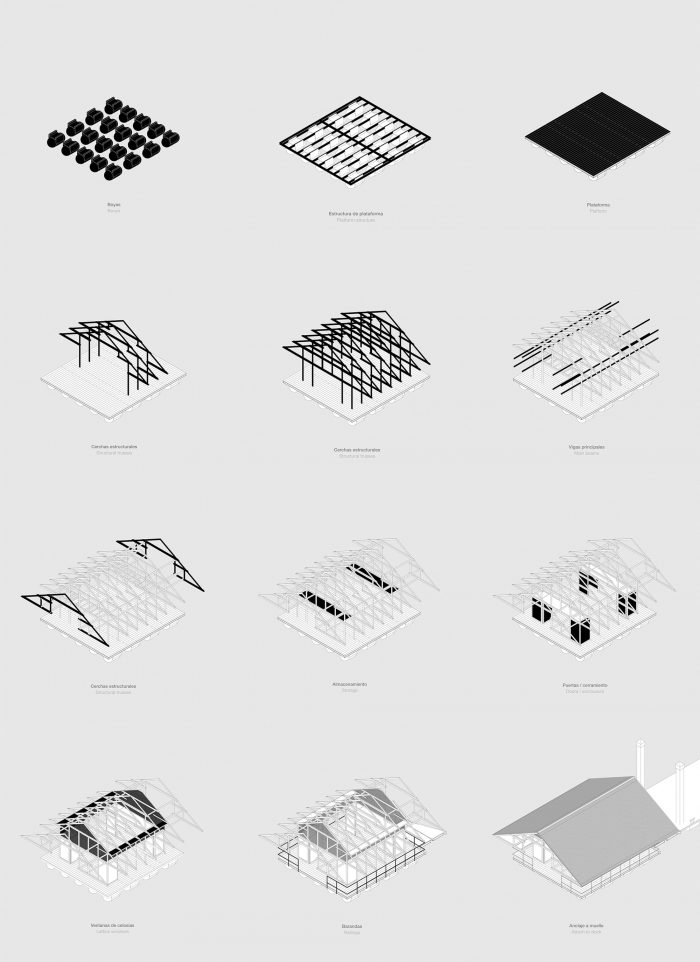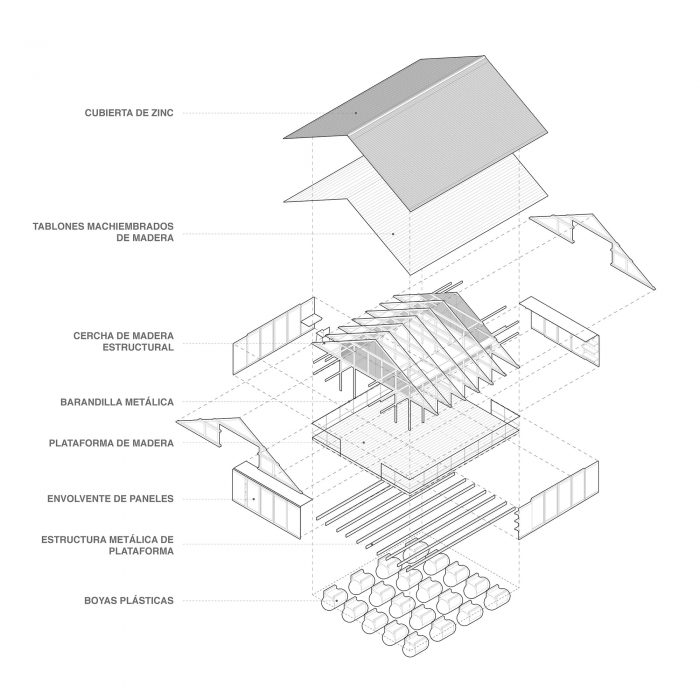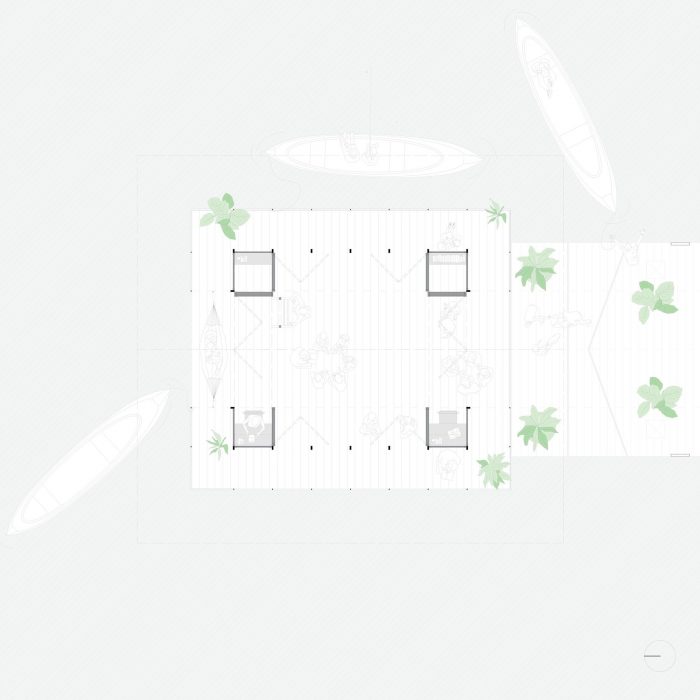桑塔伊观察站是一个浮动空间,用于艺术表达、儿童和成人的培训讲习班、环境研究和社区整合活动。
The Santay Observatory is a floating space for artistic expressions, training workshops for children and adults, environmental research, and community integration activities.
桑塔伊岛有315名居民,因其生态多样性而成为国家保护区系统的一部分。它位于瓜亚斯河上,距离港口城市瓜亚基尔800米,属于杜兰州。它的生态保护状况使基础设施的建设复杂化,以促进文化和教育的发展、尊严和对该地集体记忆的重估。尽管它具有很高的环境价值,但人口中基本需求得不到满足的比率是一个常态。
Santay Island, with 315 inhabitants, is part of the national system of protected areas for its ecological diversity. It is located on the Guayas River, 800 meters from the port city of Guayaquil, and belongs to the Durán canton. Its state of ecological protection complicates the building of infrastructures that promote cultural and educational development, dignity and revaluation of the collective memory of the site. Despite its condition of high environmental value, the rates of unsatisfied basic needs are a constant in the population.
该项目产生于桑塔伊之友基金会、专业人士和岛屿社区之间的协同作用,其愿景是整合和管理该地区的文化和社会表现,使当地社区和游客更接近自然环境和传统建筑技术,并为后代加强当地记忆。
The project arises from a synergy between the Amigos de Santay Foundation, professionals, and the island community, with the vision of integrating and managing cultural and social manifestations in the territory, bringing the local community and visitors closer to the natural environment and the traditional construction techniques, and strengthening local memory for future generations.
观察站是由当地劳工在离瓜亚基尔60公里的Babahoyo河岸上建造的,作为El Refugio del Pescador开始的浮动宜居性研究的延续。这第一个项目试图重新评估构成厄瓜多尔沿海城市非物质遗产的浮动房屋。它的建造完成后,从Babahoyo通过河流移到瓜亚基尔,最后在Santay岛的码头上定居。
The observatory is built with local labor on the banks of Babahoyo, 60 km from Guayaquil, as a continuation of the research on floating habitability begun with El Refugio del Pescador. This first project sought to revalue the floating houses constituted as intangible heritage of the coastal cities of Ecuador. Once its construction was complete, it was moved from Babahoyo to Guayaquil through the river, to finally settle on the dock on Santay Island.
它是一个多功能的浮动平台,能够适应各种活动,通过预制的轻木板制成的折叠门,连接内部空间和外部画廊,面向瓜亚斯河和Santay岛。木桁架构成了屋檐的结构,除了产生可居住的壁龛外,还提供了足够的高度,以便从其可渗透的限度内产生通风和自然照明。最后,木板被用于地板和天花板,延伸到可居住的范围之外,以产生对太阳和雨水的保护。
It is a multifunctional floating platform capable of adapting to various activities through folding doors made of prefabricated balsa wood panels that connect the interior space with an exterior gallery that looks towards the Guayas River and Santay Island. The wooden trusses constitute the structure of the gable roof that, in addition to generating habitable niches, provides sufficient height to generate ventilation and natural lighting from its permeable limits. Finally, wooden boards are used for the floor and the ceiling that extends outside the habitable limit to generate protection from the sun and rain.
观察站反映了水上居住的新可能性,在那里,建筑被表达为当地艺术家、游客和社区的一个可转换和可适应的空间,分享一个恢复几乎绝迹的传统漂浮栖息地系统的愿景,面对一个远离河流作为资源来建造城市的发展。
The Observatory reflects on new possibilities of habitability on the water, where architecture is expressed as a convertible and adaptable space for local artists, visitors, and the community, sharing a vision that recovers the almost extinct traditional floating habitat systems, in the face of a development that moves away from the river as a resource to make a city.
Architects: Juan Carlos Bamba, Natura Futura Arquitectura
Area : 56 m²
Year : 2022
Photographs :José Escandón, Juan Terreros, Jhonatan Andrade
Engineers : José Delgado Mendoza, José Guartatanga.
Collaborators : PlantaBal 3ACore Material, Fundación Young Living, Novacero, FIMCM-ESPOL, Flavio Chernes
Illustrations : Andrés Ortega, Holger Pauta, Jaime Peña
Country : Ecuador

